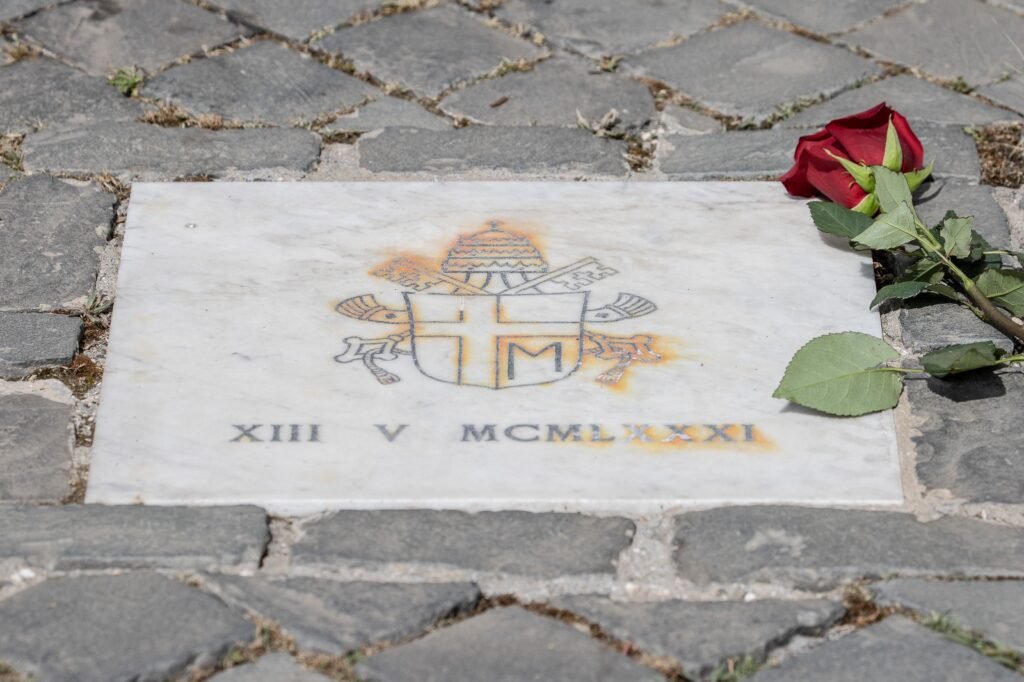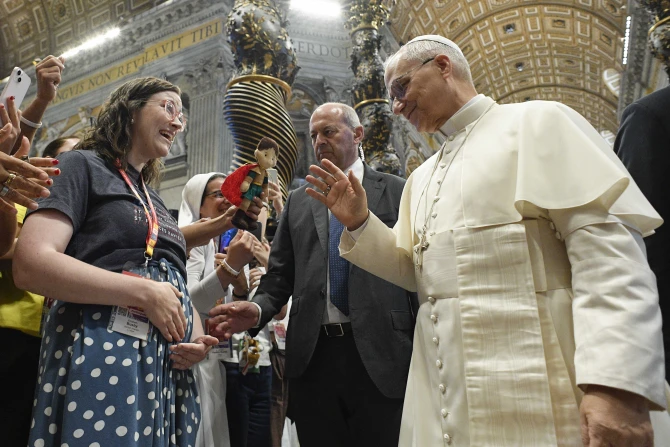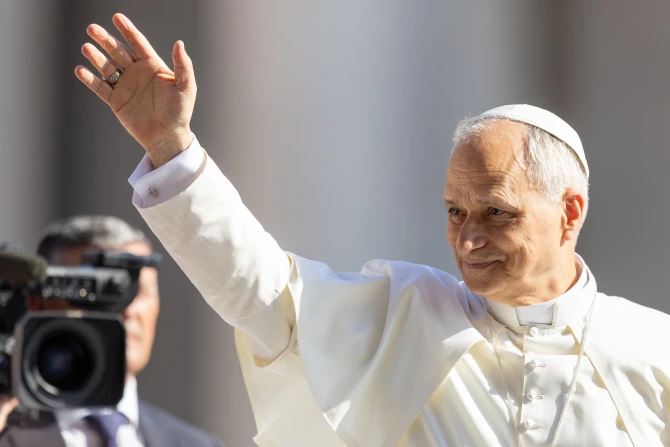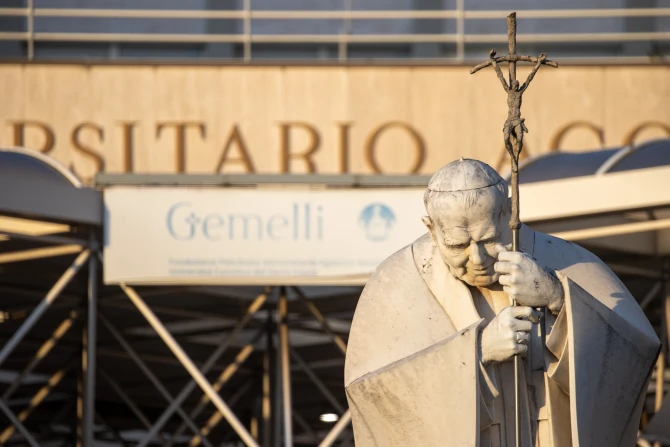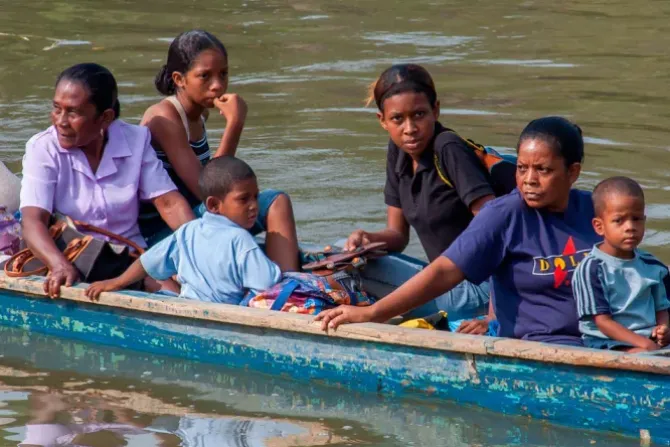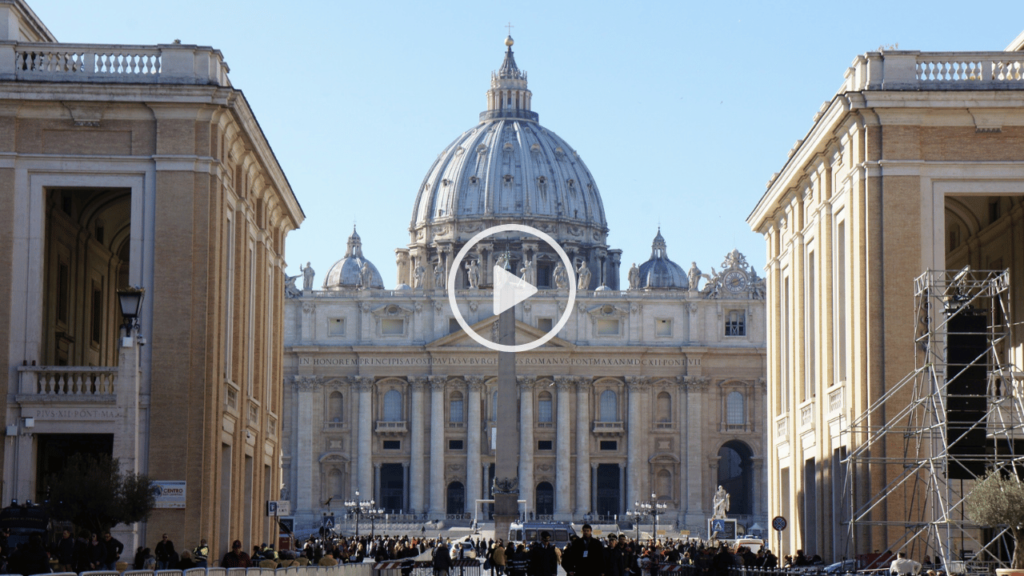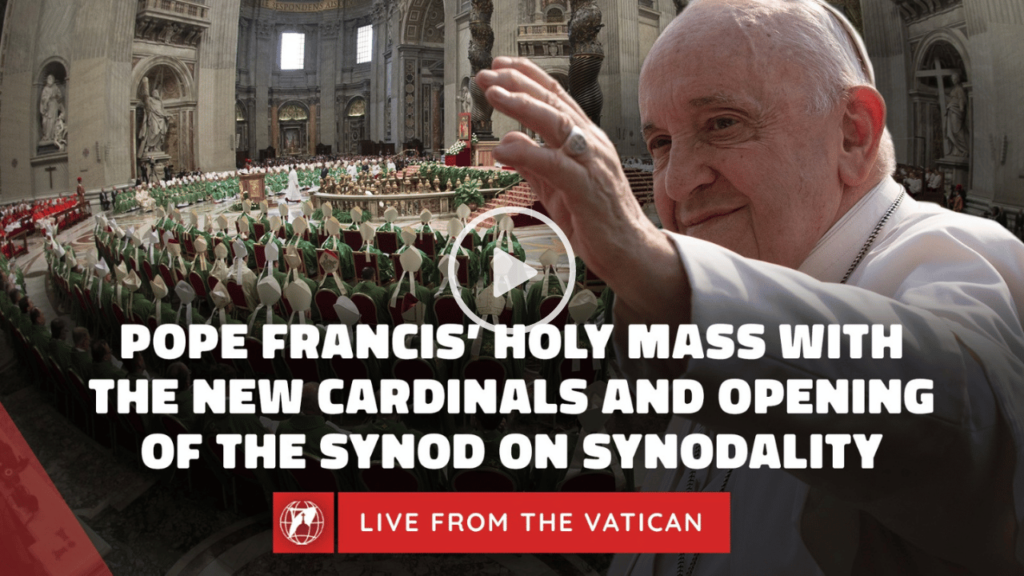Walking toward St. Peter’s Basilica from the right side of Bernini’s Colonnade, some cobblestones catch the attention. It is a white plaque with the papal coat of arms and the date May 13, 1981, in Roman numerals, indicating the exact day and place when four bullets hit Pope John Paul II.
Forty-two years ago, Pope John Paul II arrived at a crowded St. Peter’s Square on what seemed like an ordinary morning in the Vatican when suddenly he was struck by four bullets: two of them hit his stomach, another his right arm, and the last one reached his left hand.
Although a nun and several witnesses managed to stop the attacker, Mehmet Ali Ağca, from shooting, John Paul II lost a considerable amount of blood. He had to be transported to the hospital. The siren of his ambulance was broken, and they had to travel in the opposite direction to reach Gemelli Hospital in Rome on time, where he stayed for several months.
Camillo Cibin, the head of security of the Vatican Gendarmerie Corps, captured Mehmet Ali Ağca. In his statements, Ağca revealed that upon arriving in Rome, he met with three accomplices: a Turkish compatriot and two Bulgarians. He claimed that the operation was led by Zilo Vassilev, a Bulgarian military officer residing in Italy. According to Vassilev, the mission had been assigned to him by the Turkish mafia leader Bekir Çelenk in Bulgaria.
The Hand of Fatima
The attack took place on this day, May 13, the day when the Church celebrates Our Lady of Fatima, whose protection saved the life of the Pope at that time.
It is worth noting that it was the Pope’s finger that deflected the bullet, preventing it from being fatal.
St. John Paul II mentioned that when the bullet hit him, he did not realize it was the “anniversary of the day when the Virgin appeared to three children in Fatima.” Later, he explained that his personal secretary told him after the operation that a bullet had been extracted from his intestine.
During his convalescence, St. John Paul II studied the reports of the Fatima apparitions and one year after the attack, he traveled for the first time to the Fatima shrine in Portugal to “thank the Virgin for her intervention in the salvation of my life and the restoration of my health.”
In 1984, Pope Wojtyla formalized his devotion and gratitude to the Virgin by donating the bullet that had been extracted to the Fatima shrine, where it was set into the halo of the image’s crown. Additionally, the papal vehicle in which he was traveling at the time of the attack is now displayed in the Vatican Museums.
On May 14, 2006, the 25th anniversary of the attack, Pope Benedict XVI recalled the event and stated, “John Paul II felt that he had been miraculously saved from death by the intervention of “a maternal hand,” as he said, and his entire pontificate was marked by what the Virgin had announced in Fatima: ‘In the end, my Immaculate Heart will triumph.'”
The Third Secret of Fatima
Furthermore, this attack has been attributed to the Third Secret of Fatima, where the Virgin revealed to the shepherd children Lucia, Jacinta, and Francisco that “the Holy Father, on his knees at the foot of the Cross, was killed by a group of soldiers who fired bullets and arrows at him.”
On the other hand, the Congregation for the Doctrine of the Faith has interpreted this secret as “the suffering of humanity before the world wars, the persecution of the Church (including the attempted assassination of John Paul II), the sacrifices of the martyrs, penance, the call to conversion, and the hope of salvation.”
The Value of Forgiveness St. John Paul II publicly expressed his forgiveness to the Turkish man on several occasions. They met in December 1983 at Rebibbia Prison in Rome, where Agca asked the Holy Father how it was possible that his shots had not ended his life.
In 2013, Agca published the book “They Promised Me Paradise: My Life and the Truth about the Attack on the Pope,” where he blamed Ayatollah Khomeini of Iran for ordering the attack. This claim was debunked by Father Federico Lombardi, the Vatican spokesperson at the time, who warned that the Turkish man had reinvented the conversation he had with St. John Paul II.
This article was originally published on ACI Prensa.

